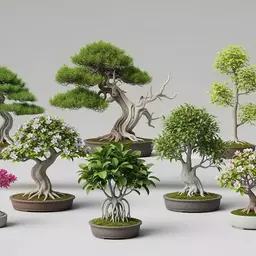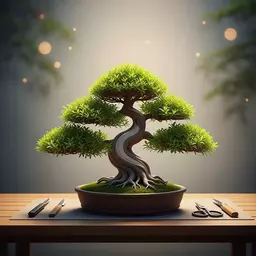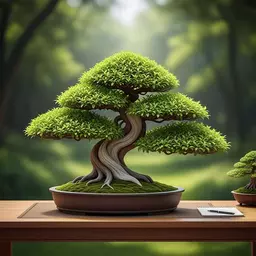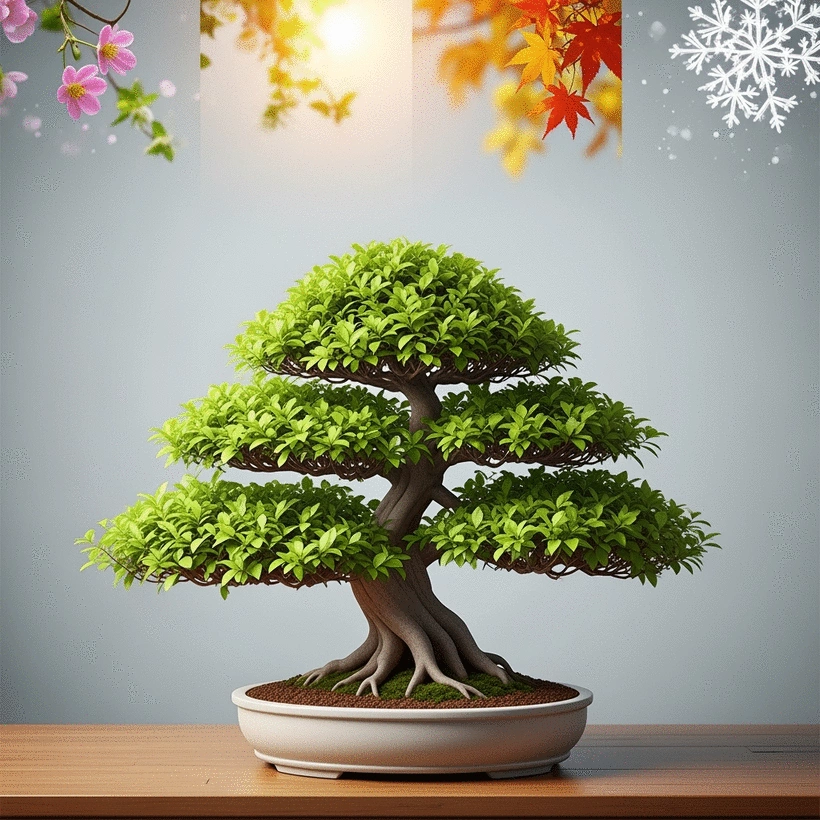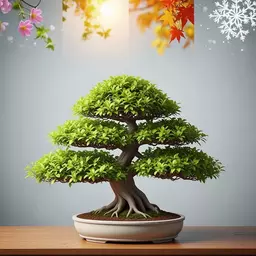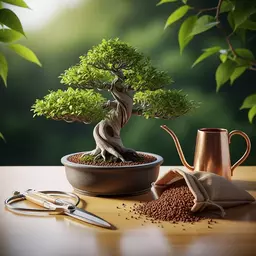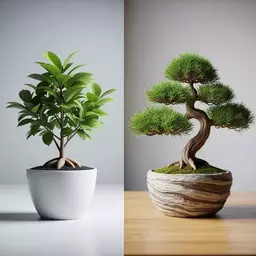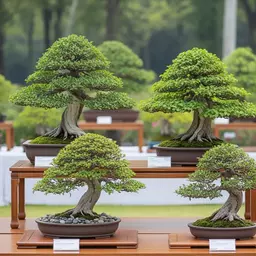Seasonal Care for Your Bonsai
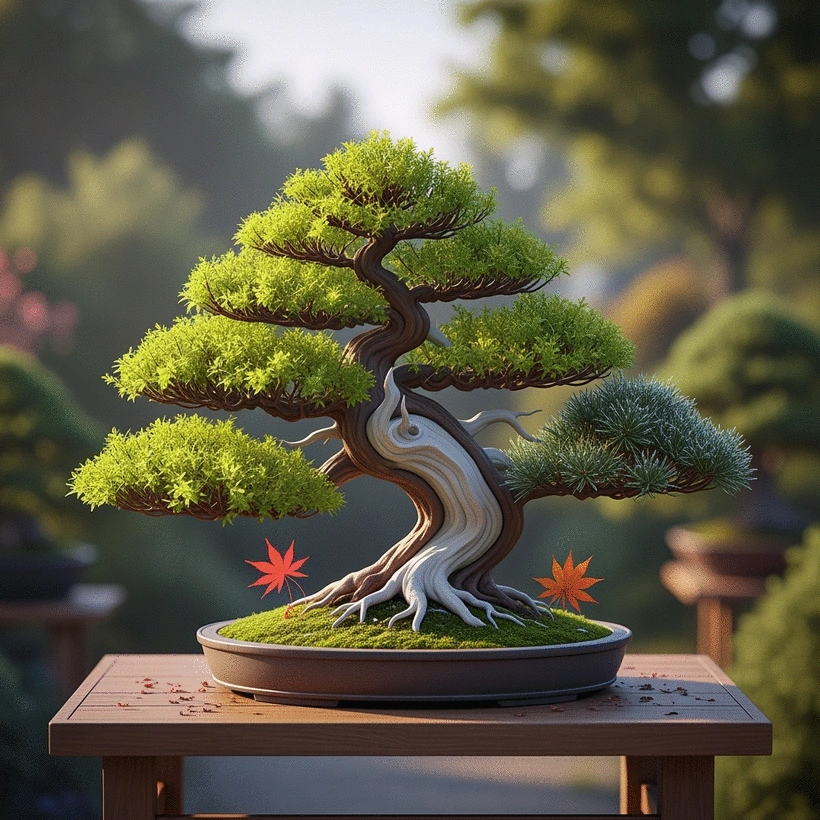
In the world of bonsai, each season tells a different story. As the leaves change, so too must our approach to care. This guide delves deep into how to nurture your bonsai through the ups and downs of the year, ensuring these living masterpieces thrive in every climate.
What You Will Learn
- Spring requires increased watering and light to support new growth.
- Summer demands more frequent watering while managing exposure to harsh sunlight.
- Fall is a time to reduce watering and prepare bonsai for dormancy.
- Winter care involves monitoring water levels closely to prevent overwatering and frost damage.
- Humidity control is crucial, especially during dry summer and winter months.
- Engaging with the bonsai community can enhance your skills and knowledge.
- Utilizing available resources, such as guides and workshops, is essential for ongoing learning.
Bonsai Seasonal Care Adjustments
Understanding how to adapt watering, light, and humidity for your bonsai across different seasons is crucial for its health and longevity. The visual below summarizes key adjustments. For a more comprehensive overview of foundational care, explore our bonsai care for beginners guide:
Spring: Rejuvenation & Growth
- Watering: Increase as growth resumes.
- Light: Ensure ample light for new leaves.
- Humidity: Monitor for vigorous growth.
Summer: Heat & Hydration
- Watering: Frequent hydration, daily or more.
- Light: Protect from direct sun (midday).
- Humidity: Crucial, use humidity trays.
Fall: Transition to Dormancy
- Watering: Gradually reduce frequency.
- Light: Reduce exposure as days shorten.
- Humidity: Less critical, but still monitor.
Winter: Dormancy & Protection
- Watering: Minimal, avoid overwatering.
- Light: Sufficient indoors; protect from frost.
- Humidity: Important indoors; use humidifier.
Understanding the Essentials of Seasonal Bonsai Care
As a bonsai enthusiast, I can tell you that understanding the essentials of seasonal care is vital for the health and beauty of your miniature trees. Each season brings unique challenges and opportunities, and adapting your care routine can make all the difference! In this section, we'll explore how to adjust watering, light, and humidity needs to keep your bonsai thriving year-round.
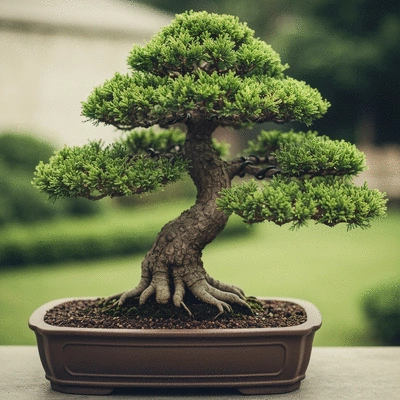
Why Adapting Watering and Light Needs Matters
Watering and light are two of the most critical factors influencing your bonsai's growth and overall health. Adapting these needs based on seasonal changes ensures that your tree receives the right amount of moisture and sunlight, which varies significantly throughout the year.
- In spring, your bonsai will start to wake up and require more water and light.
- Summer heat demands more frequent watering, but it also requires careful light management.
- In fall, reducing water helps prepare your bonsai for dormancy.
- Winter requires less water and careful light consideration to maintain healthy growth.
By learning to adapt these needs, you can cultivate a more resilient bonsai that flourishes in its environment. Remember, every bonsai is unique, so tune in to the specific signs your tree shows as the seasons change! For specific guidance on managing your bonsai during the warmer months, refer to our bonsai care guide for Australians.
The Impact of Seasons on Bonsai Health
The seasons have a profound impact on the health of your bonsai. Each change in the weather affects not just how much water your tree needs, but also its growth patterns and susceptibility to pests and diseases. Understanding these seasonal dynamics can help you make proactive adjustments to your care routine.
- Spring is a time for vigorous growth and rejuvenation.
- Summer can bring stress from heat, requiring careful attention to watering.
- Fall is about transitioning to dormancy, which means cutting back on water and nutrients.
- Winter demands minimal care to avoid overwatering and frost damage.
By recognizing how each season affects your bonsai, you can provide tailored care that promotes its longevity and beauty. Keeping a close eye on your tree during these transitions is essential!
Humidity Levels and Their Role in Bonsai Care
Humidity is another critical factor that often goes overlooked in bonsai care. Different species have varying humidity needs, and fluctuations can affect their health. Managing humidity levels is especially important in the dry heat of summer or the dry indoor air of winter.
- Indoor bonsai may benefit from humidity trays filled with water and pebbles.
- Grouping plants can help create a more humid microclimate.
- In winter, consider using a humidifier to maintain optimal levels.
By ensuring proper humidity, you can support your bonsai's health and enhance its growth. Each little adjustment in care makes a difference, and at Shire Bonsai, we’re here to guide you through this rewarding journey!
Pro Tip
To enhance your bonsai's resilience during seasonal transitions, consider incorporating organic fertilizers during the growing seasons. This will provide essential nutrients that support robust growth and help your bonsai adapt to changing conditions more effectively. Remember, a well-nourished bonsai is better equipped to handle the stresses of each season!
Summarizing Key Takeaways for Effective Bonsai Care
As we wrap up our exploration of bonsai care, it’s essential to remember that adapting to the seasonal needs of your bonsai is key to their vitality. Throughout the year, your approach to watering and light must shift to cater to the specific requirements of each season. Here are the key adjustments to keep in mind:
- Spring: Increase watering as growth resumes, and ensure ample light to support new leaves.
- Summer: Adjust watering frequency, with a focus on hydration in the heat while protecting from direct sun.
- Fall: Gradually reduce watering and light exposure as plants prepare for dormancy.
- Winter: Monitor moisture levels closely and provide sufficient light indoors to ensure survival.
By keeping these adjustments in mind, you’ll create an environment that allows your bonsai to thrive. Each season brings unique challenges, but with patience and care, your little trees can flourish beautifully!
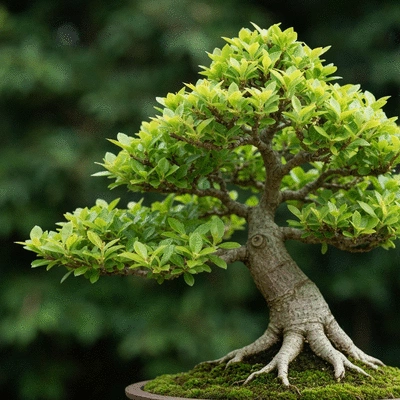
Encouraging Ongoing Bonsai Enthusiasm
One of the most fulfilling aspects of bonsai cultivation is sharing the journey with others. Connecting with fellow bonsai enthusiasts can lead to invaluable exchanges of tips, techniques, and inspiration. I encourage you to reach out and engage with our community at Shire Bonsai. Whether through social media groups, local clubs, or bonsai exhibitions, you’ll find a wealth of knowledge and camaraderie waiting for you!
- Join online forums dedicated to bonsai discussions.
- Attend local bonsai shows to meet other enthusiasts and gain insights.
- Share your progress and ask questions on social media platforms.
Building these connections not only enriches your experience but also fosters a supportive community that celebrates the art of bonsai.
Resources for Further Learning and Support
To deepen your bonsai knowledge, I recommend exploring various resources that can guide you on your journey. At Shire Bonsai, we offer a variety of articles, guides, and workshops designed to empower your bonsai cultivation skills. Here are some great places to start:
- Visit our comprehensive guides on specific bonsai species and care techniques.
- Sign up for workshops that focus on styling and seasonal maintenance.
- Check out infographics for quick references on watering and light needs.
With these resources at your disposal, you can continue to learn, grow, and create stunning bonsai masterpieces. Embrace the journey, and let your passion for bonsai flourish!
Frequently Asked Questions (FAQs)
- Q: How do watering needs change for bonsai throughout the year?
A: Watering needs increase in spring and summer due to active growth and higher temperatures, requiring more frequent hydration. In fall, gradually reduce watering to prepare for dormancy, and in winter, water minimally to prevent overwatering and frost damage. - Q: What is the ideal light exposure for bonsai during different seasons?
A: In spring, ensure ample light for new leaves. During summer, protect bonsai from harsh midday sun to prevent scorching. In fall, reduce light exposure as days shorten, and in winter, provide sufficient light indoors while protecting from frost. - Q: Why is humidity control important for bonsai, especially indoors?
A: Humidity is crucial for bonsai health, particularly for indoor species or during dry summer and winter months. Low humidity can stress the tree. Using humidity trays, grouping plants, and employing humidifiers can help maintain optimal levels. - Q: How can I prepare my bonsai for winter dormancy?
A: To prepare for winter dormancy, gradually reduce watering and nutrient supply in the fall. Ensure the bonsai is in a protected area to prevent frost damage, and if kept indoors, monitor humidity and light levels carefully. - Q: Where can I find more resources and connect with other bonsai enthusiasts?
A: You can find more resources and connect with the bonsai community through online forums, local bonsai clubs, exhibitions, and specialized websites like Shire Bonsai, which offers guides, workshops, and articles.
Recap of Key Points
Here is a quick recap of the important points discussed in the article:
- Spring: Increase watering as growth resumes and ensure ample light to support new leaves. Check out our spring care guide for healthy bonsai for more details.
- Summer: Adjust watering frequency, focusing on hydration in the heat while protecting from direct sun.
- Fall: Gradually reduce watering and light exposure as plants prepare for dormancy.
- Winter: Monitor moisture levels closely and provide sufficient light indoors to ensure survival.
- Humidity Management: Use humidity trays, group plants, and consider humidifiers to maintain appropriate levels.
- Community Engagement: Connect with other bonsai enthusiasts through forums, local shows, and social media for shared learning and support.
